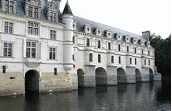|
There were around 756 entries and in the November of 1983 the
competition winner was announced and it was actually won by an unknown architect called
Carlos Ott, who was a Uruguayan that lived in Canada.
The site chosen for the new building was the old Paris
Bastille train station, which opened in 1859 and closed in December 1969, but where art
exhibitions were held afterwards.
It was demolished in 1984 to make way for the new Opera Bastille that was supposed to take
the place of the Opera Garnier, but the Opera
Garnier still holds ballets and operas.
The new opera building was inaugurated on 13th July 1989, the 200th anniversary of the
storming of the Bastille, where they held a
gala concert conducted by Georges Pretre and featured singers such as Teresa Berganza and
Placido Domingo. However, it did not see its first opera performance until 17th
March 1990.
The Opera Bastille was designed with 2,723 seats in such a way that everyone has a great
view of the stage without any obstructions and the building itself is characterised by the
transparency of its facades and the utilisation of the same materials inside and out.
The backstage facilities are of course very modern and allow crews to roll entire sets off
and on intact, however, many people feel that the acoustics are disappointing when you
compare them to other opera houses.
Address & Contact Details:
Opéra National de Paris - L'Opéra de la Bastille
2bis Place de la Bastille
75012
Paris
France
Telephone: 1 40 01 80 52
|
|



